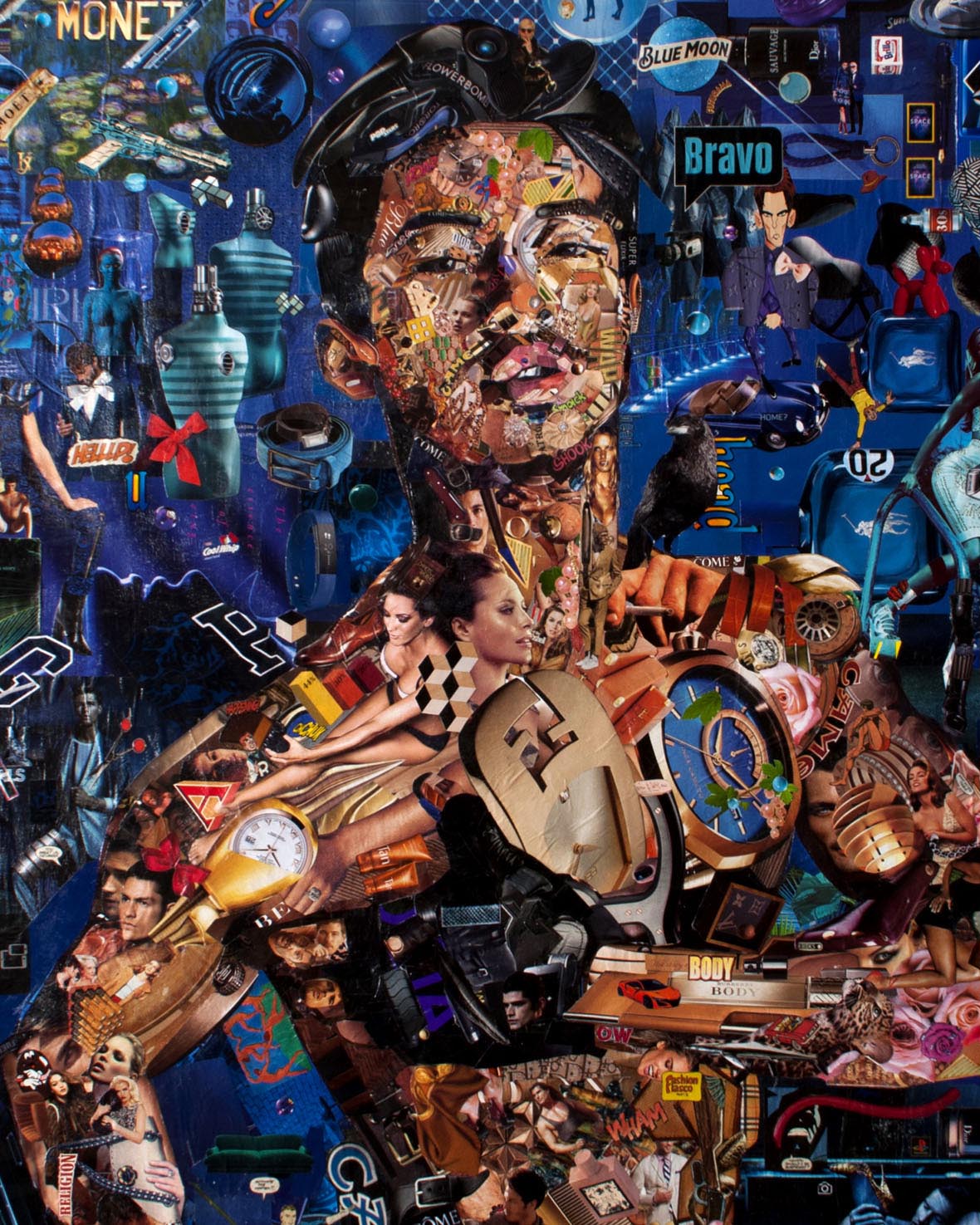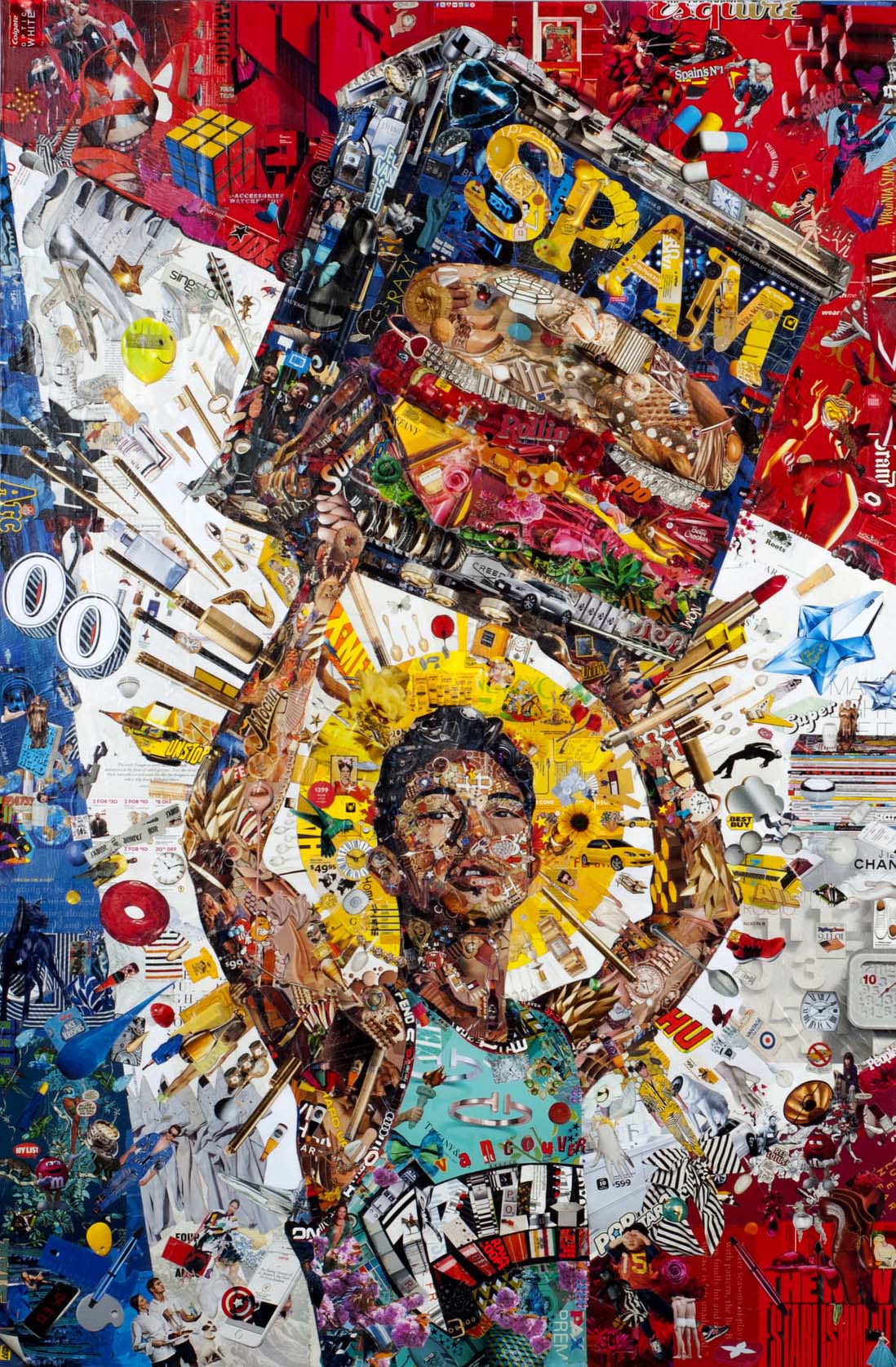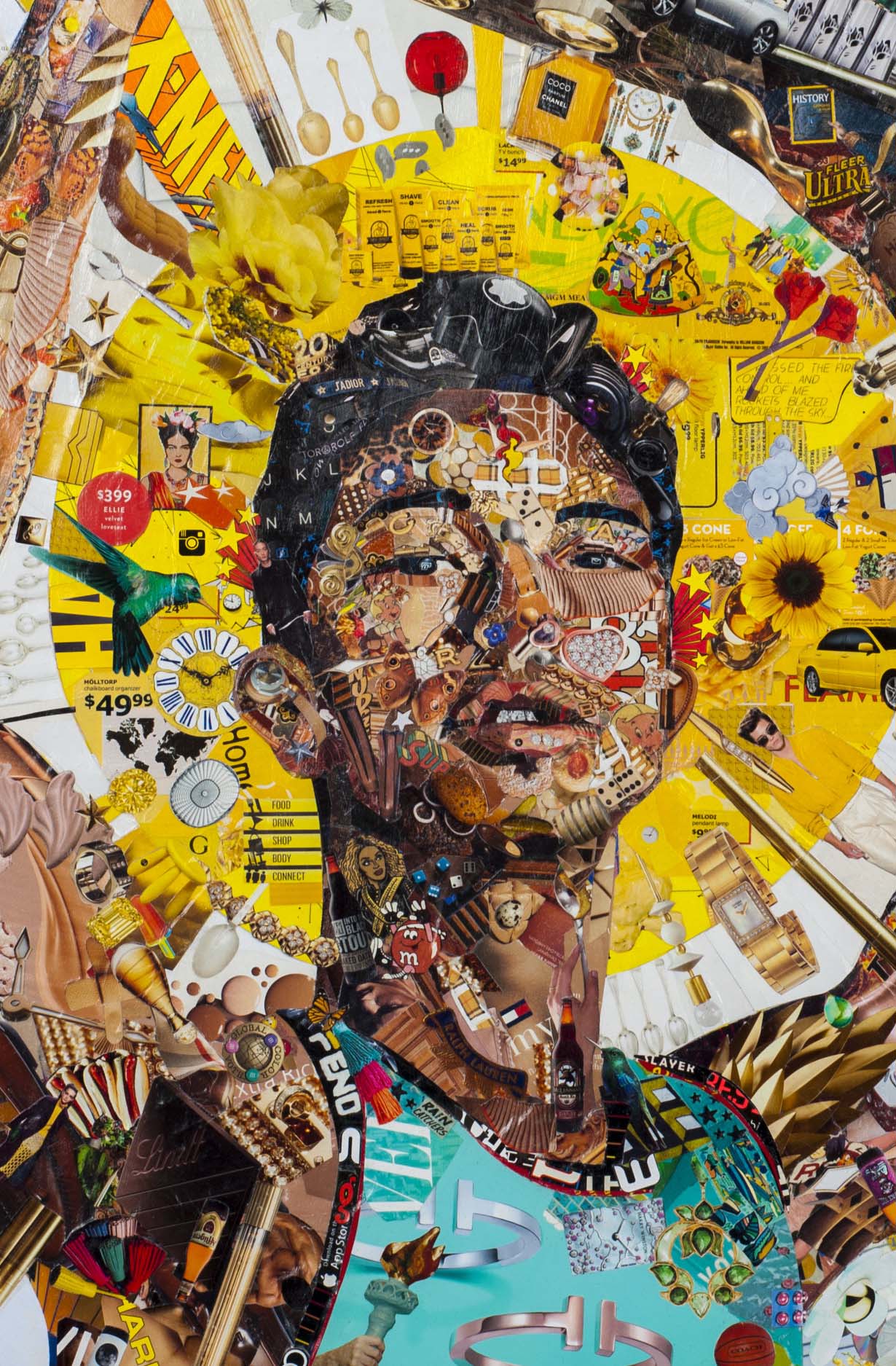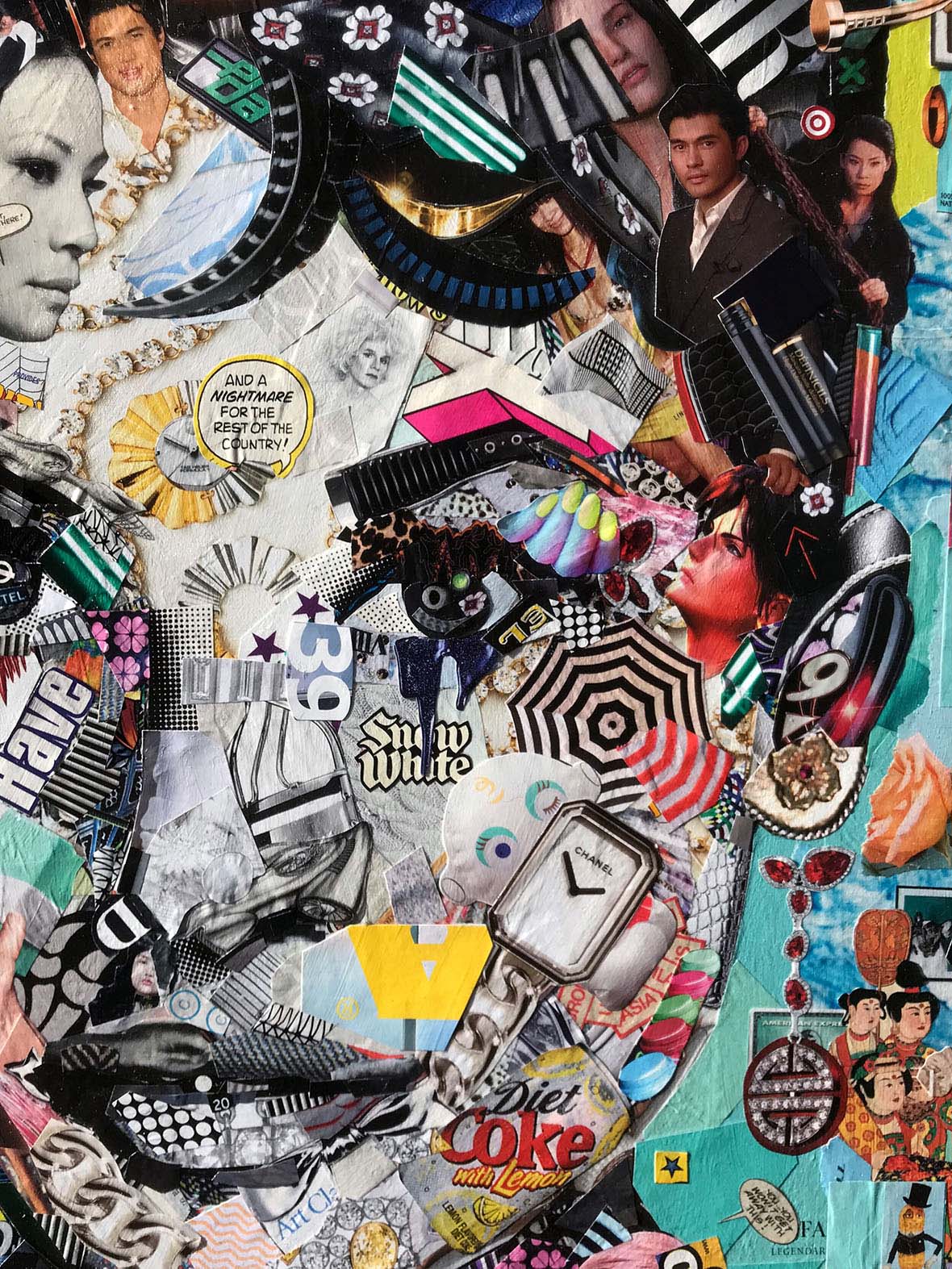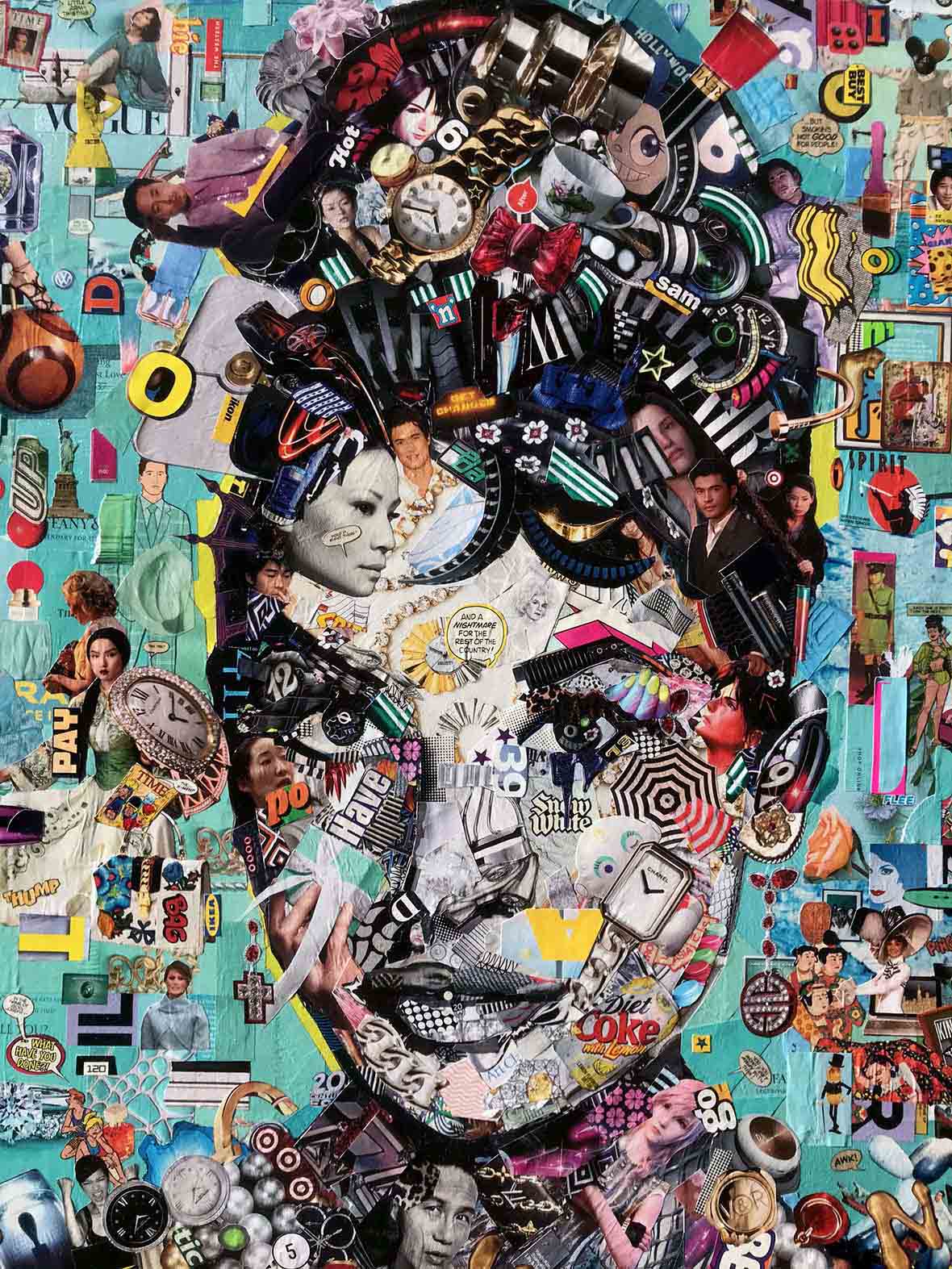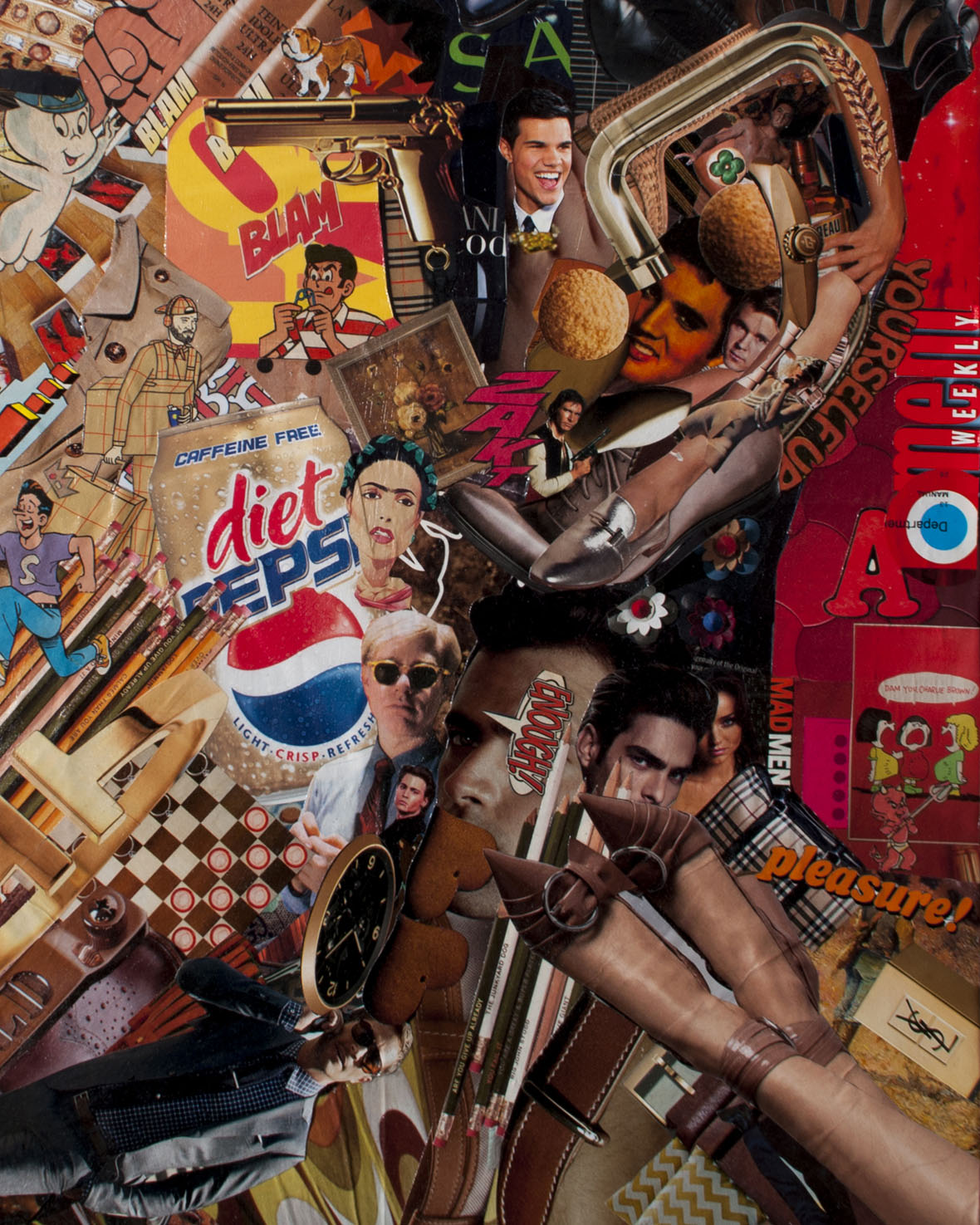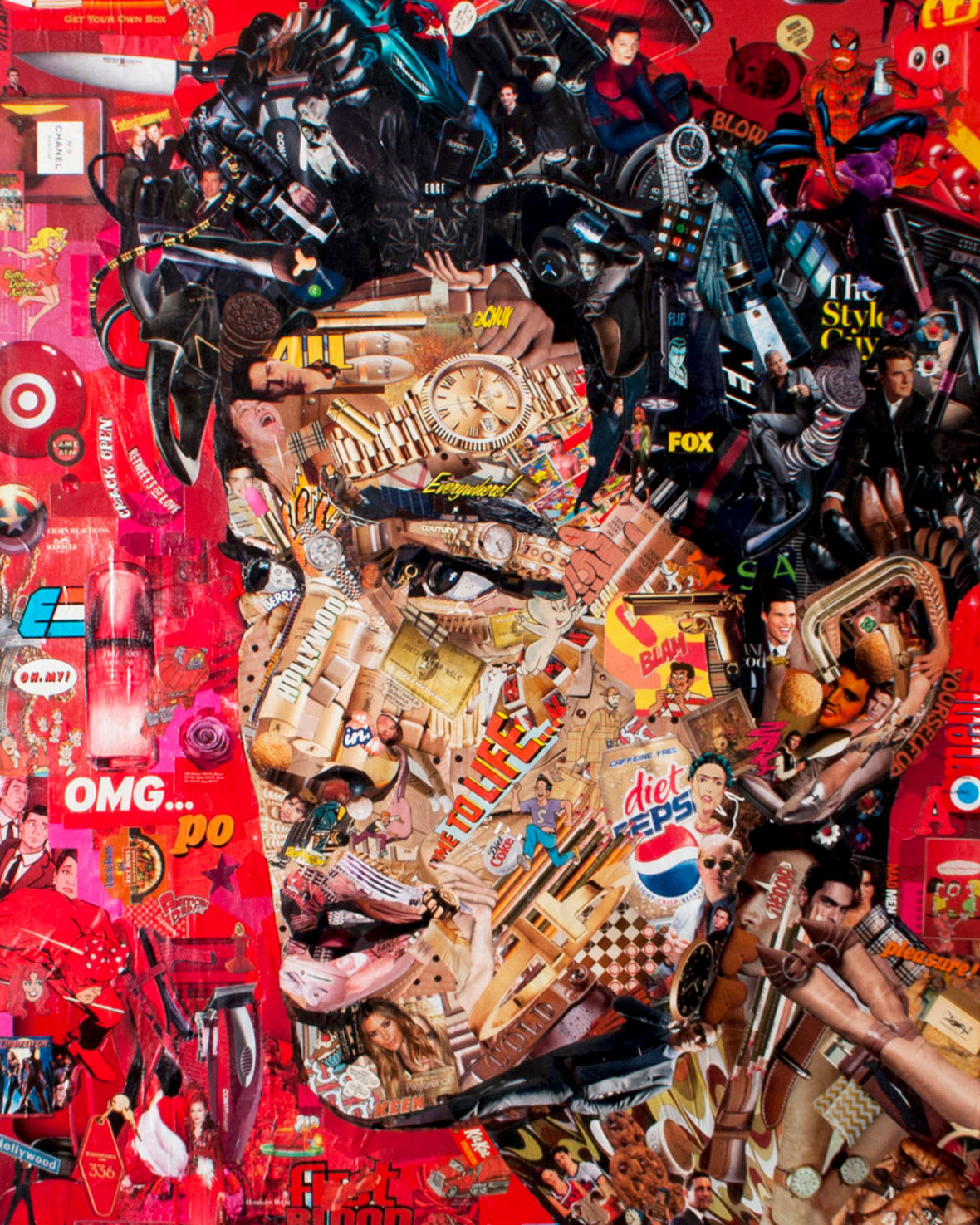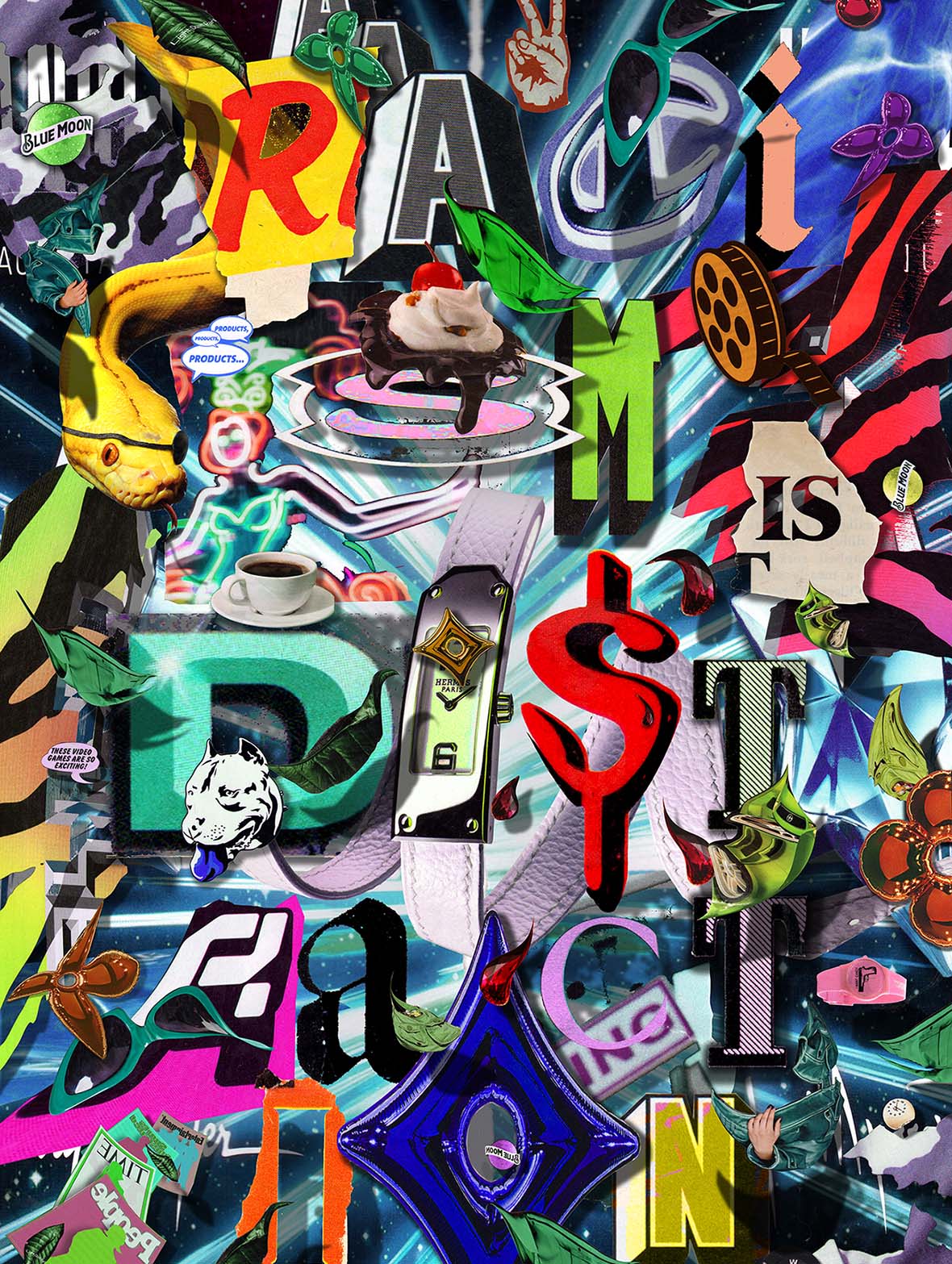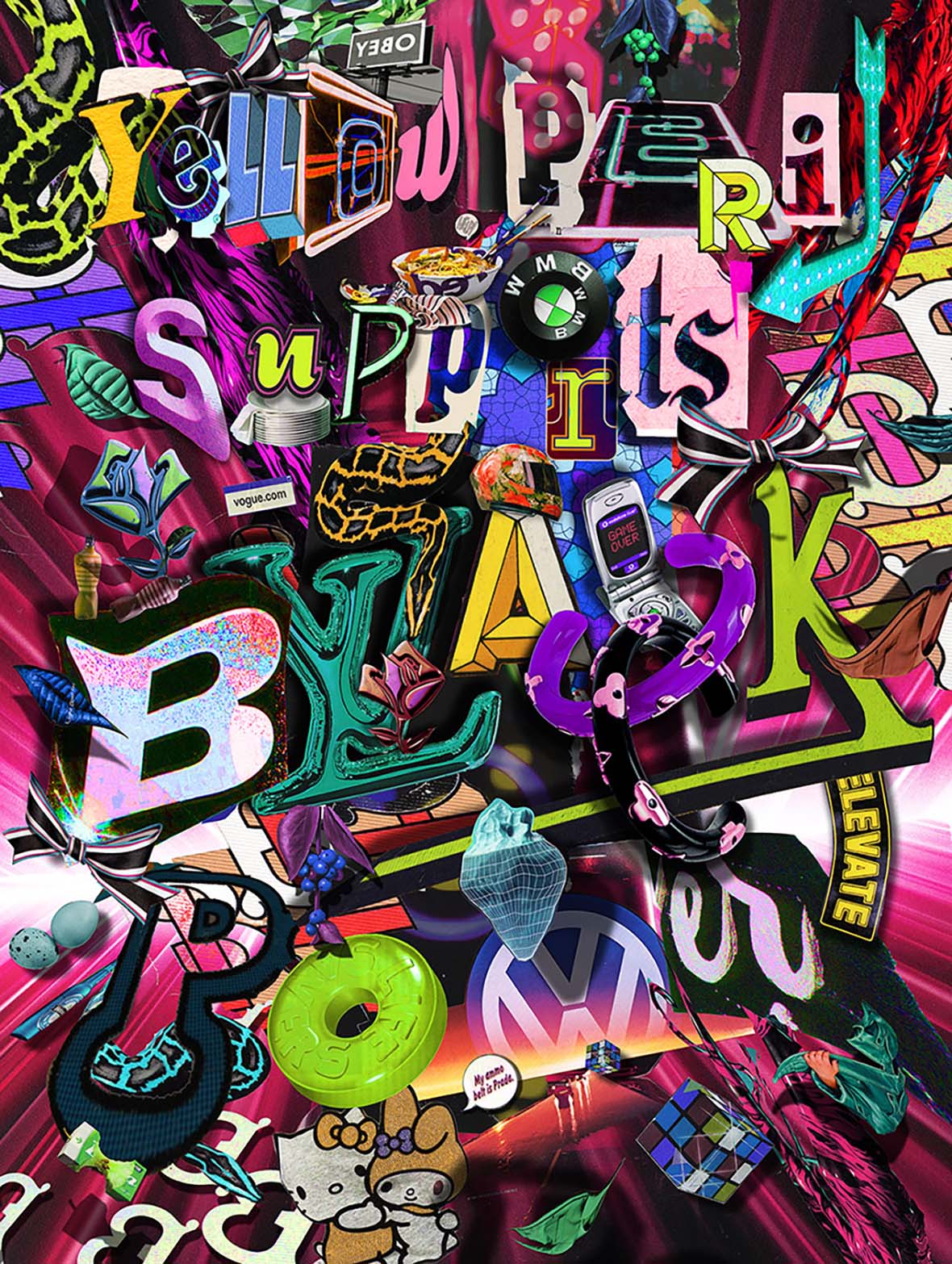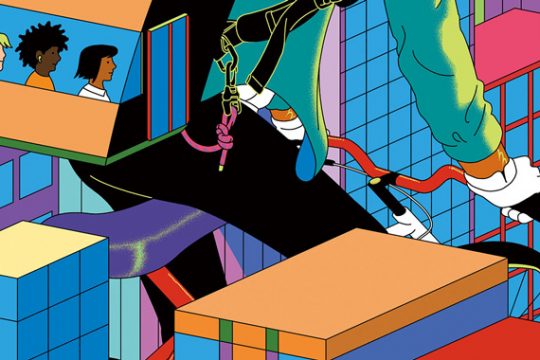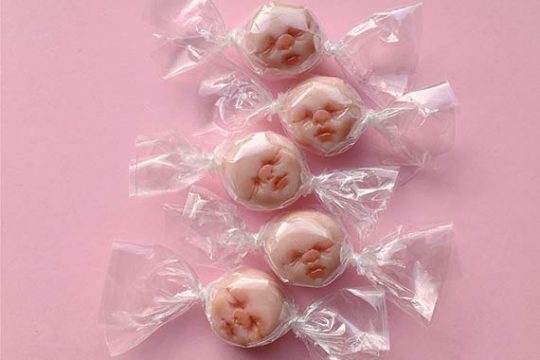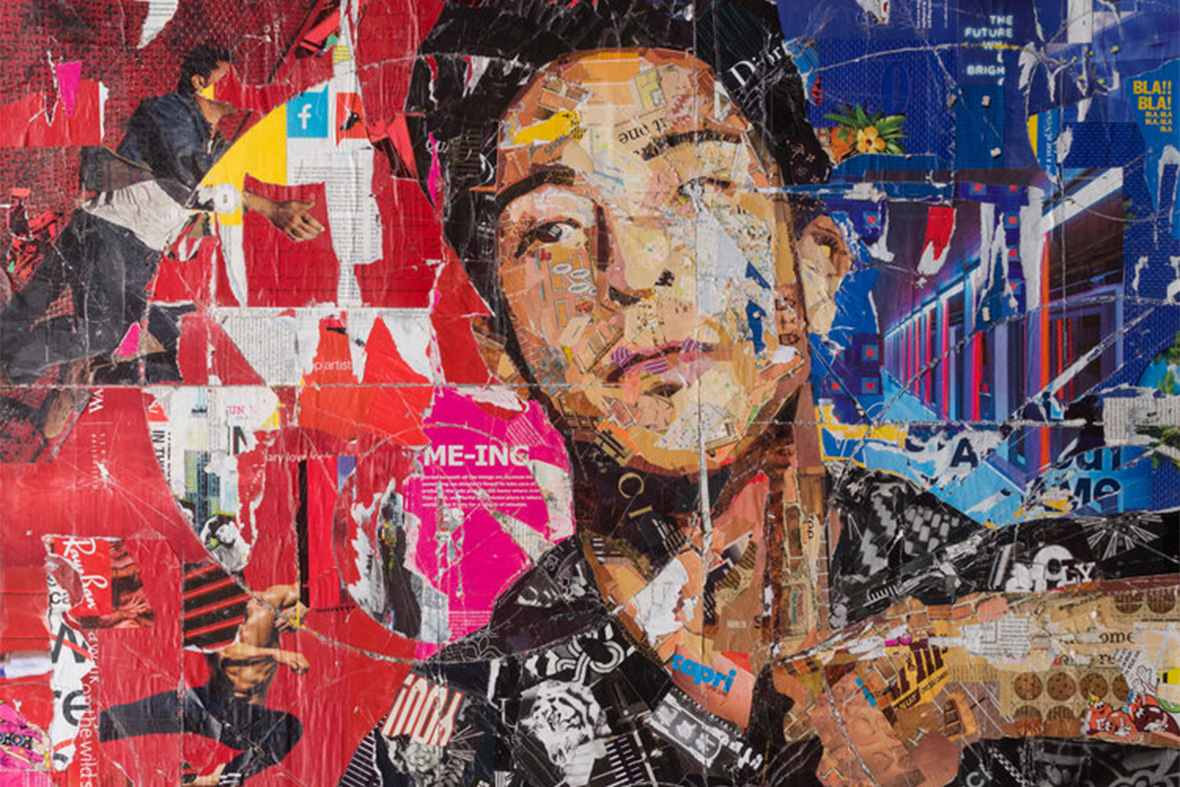
Jay Cabalu is no stranger to loneliness.
Growing up in Canada, the Philippines-born artist spent much of his childhood collecting comics and magazines. Popular culture through the lens of printed media served as a much-welcomed escape from the isolation that he experienced as a queer immigrant. As he began making art as an adult, he decided to revisit the print media that offered him temporary comfort, only to discover them with a new perspective. “In the magazines I flipped through, I saw little of myself,” he says. “There were no representations of Asian men that were reflective of my sexuality. As I grew older, I desired to represent my adult self as the person I was looking for in the material I browsed as a child.” Now, cutting these magazines and comics to shreds, he’s creating visually staggering collages that touch on themes of identity, capitalism, and supremacism.
Jay Cabalu 是出身于菲律宾的酷儿艺术家,专注于波普艺术,擅长手工切割拼贴,现居温哥华。对从小在加拿大的一个移民家庭中长大、不太接触电子设备的他来说,在漫画和杂志对他的艺术实践产生了重大影响。菲律宾移民、加拿大国籍、同性恋……自小就在三种身份的夹缝中长大,这让 Jay 倍感孤独。“在翻阅过的杂志中,我几乎看不到自己。” Jay 说,“没有任何能反映我性向的亚洲男人形象。而随着年龄的增长,我愈发渴望在我小时候浏览的资料中就能找到代表我这一群体的成年人。”于是,身份焦虑促使着他不断思考和探索自身认同的问题,最终也催生出了他缤纷多彩的拼贴作品。
In Vancouver, media representation of Filipinos was scarce. Hence, once Cabalu started making art, it felt all the more important for him to provide proper representation. This came in the form of self-portraits. Take, for example, the piece De Los Reyes, titled after his mother’s maiden name. In it, he hoists a massive can of SPAM over his head in triumph. The prominent depiction of the canned meat is, in a less subtle way, also a homage to his Filipino roots. This was a staple food item for nearly all Filipinos during the Second World War and remains wildly popular today. “I wanted to create a loud self-portrait about Filipino identity so I threw in many stereotypical references to my culture that you would only know if you were an insider,” he explains. “While stereotypes can be harmful and perpetuate a notion that people of racial groups are all the same, they can also sometimes provide comfort when you are part of a diaspora that lacks visibility.”
在 Jay 从小成长起来的地方,菲律宾人是几乎不会出现在电视电影中的人群。亚裔族群的数量既非少到无法计数,也远不至于被完全忽略。
在 Jay 为自画像《De Los Reyes》的命名时,他沿用了母亲的娘家姓(直译为“国王的”),结合着触目的“SPAM”午餐肉品牌字样,让人直视其背后的历史:二战期间,在菲律宾(当时是美国殖民地),罐头肉在作为一种易于运输的军用粮非常流行。“我想创造一个关于菲律宾人身份的响亮的自画像,所以我抛出了许多关于我的文化的刻板印象。” Jay 说道“虽然说‘刻板印象’可能不太友好,且会使种族群体的人都是一样的观念永久化,但当你是缺乏知名度的少数群体的一部分时,它们有时也可以提供安慰。”Jay 坦然说道。
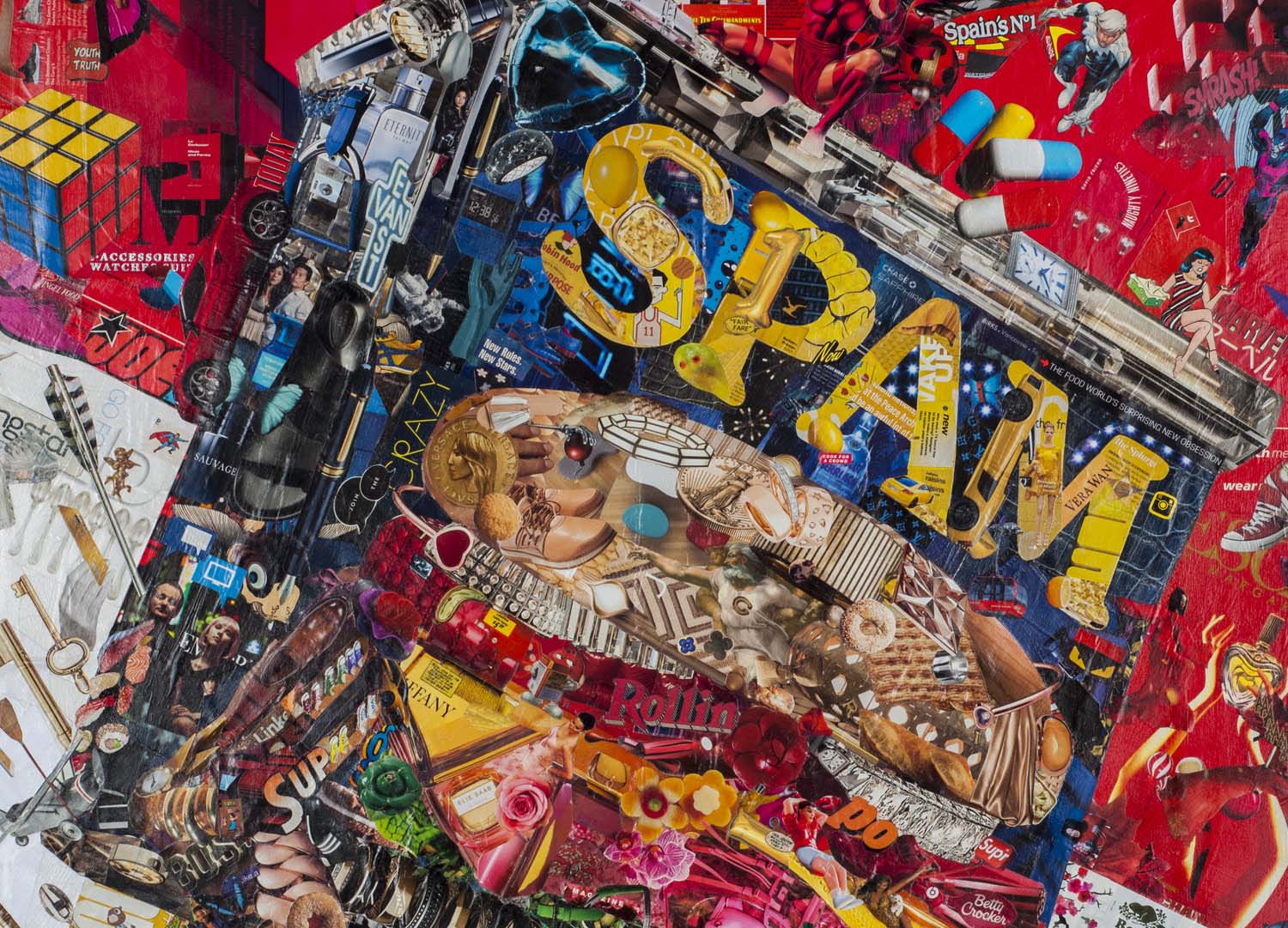
From celebrity portraits and comic-style bubble dialogue to Costco and luxury-brand logos, the hodgepodge of motifs that appear in his collages is designed to shock the senses. Despite his personal artistic goals, Cabalu hopes for audiences to piece these disparate components together and form their own interpretation. “I like hiding Easter eggs in plain sight, inviting viewers to take a closer look and discover the connection between the fragments,” he says. “Working on this type of art forces me to see small, standalone images with a new perspective, to identify how they can come together to form a larger picture.”
细看 Jay 的作品,从明星照片到漫画字体,从大卖场价码标到毛泽东像,从 Jeff Koons 的气球狗到LV、宝格丽的 LOGO……每一张肖像拼贴都包含了很多信息,Jay 希望观众们可以用任何他们中意的方式来自行理解作品。“我很喜欢把彩蛋藏在显而易见的地方,邀请观众仔细观察,并在更大的画面和组成它的碎片之间建立联系。这种类型的艺术创作迫使我把小的、孤立的图像看成另一种东西,以创造更大的画面。”
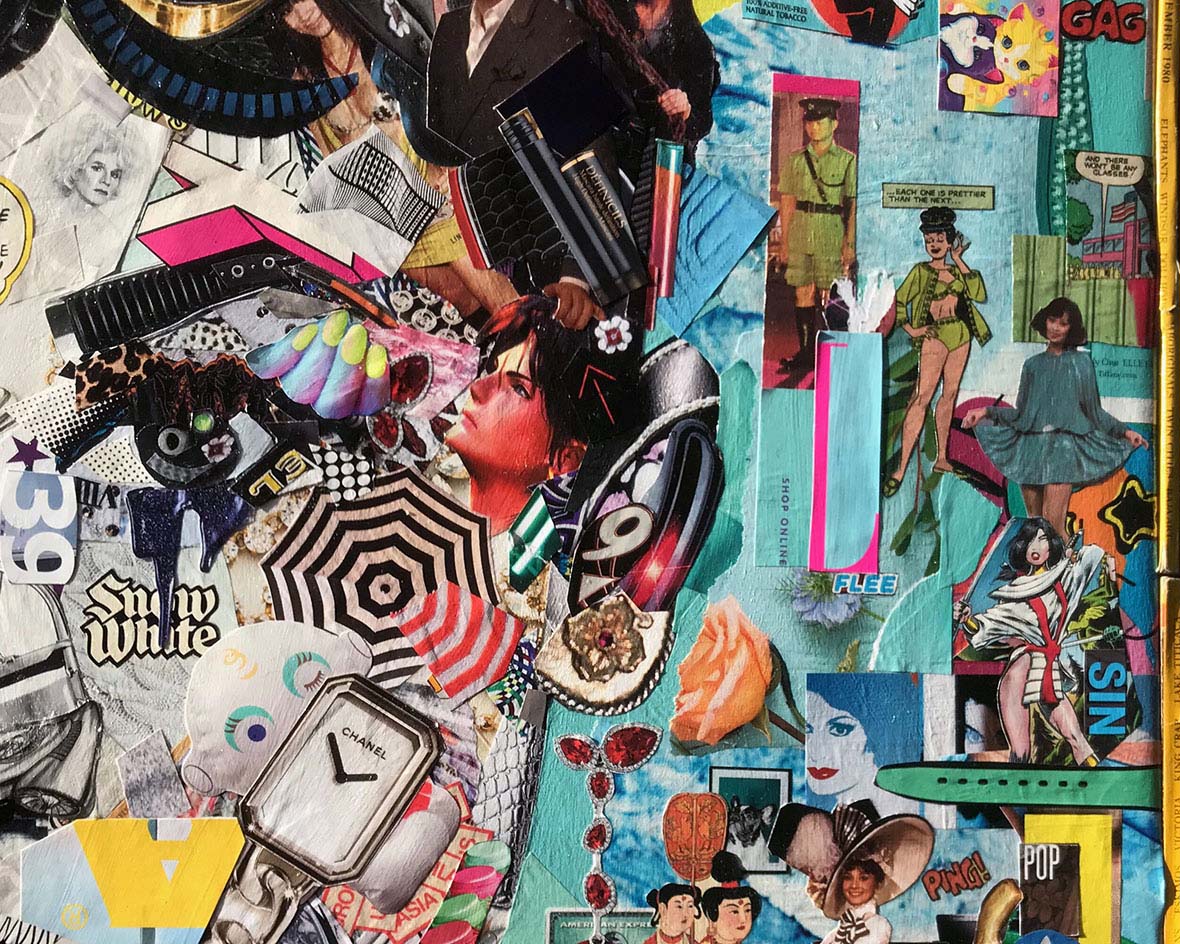
Cabalu’s collages are mostly cut and pieced together by hand. It’s time-consuming but worth the effort as he believes that the “materiality” of the medium best represents his life experiences. To him, paper collages have a tactility unrivaled by any other medium. “Especially in person, you can see the fragility of the paper in every ripple, cut, and tear,” he says. “It reveals how the superficial notions that magazines tout—about how human beings should look and what we should own to be considered worthy—as being paper-thin.”
His art is vengeful, in a way, made to cast a critical gaze on the white-male society that he grew up in. “I love the ironic symbolism of physically taking traumatic materials and adorning myself in branding to reverse my exclusion, while also being obvious that it’s just paper— it’s nothing essentially.”
从规划设计到剪裁粘贴,Jay 会花费很多时间在手工的过程中,以期呈现出最佳的层次分布效果。他认为这种“物质属性”更能表达他的生活经验,这也是他用实体纸张拼接作为主要媒介的原因,他喜欢纸质拼贴的原始和触感。“尤其是亲手制作的话,你能从每一个波纹、剪裁和撕裂中看到纸张的脆弱。”Jay 说,“一纸厚度,它却向我们展露杂志所吹捧的肤浅观念——即关于人们理应如何穿着打扮,以及什么才是值得拥有的。”
同时,他也认为目前人们生活在一个消解白人至上主义结构的、严肃对话的时代,而他童年印象中的杂志则一直以来都是个维护白人至上主义的资本主义工具。“我喜欢这种具有讽刺意味的象征意义,亲躬力行地拿着创伤性的材料——杂志,来装饰自己的作品,以扭转我的排斥感。同时也显而易见的是,这不过就只是一页页纸头而已,本质上说,它什么都算不上。”
Cabalu’s pivot into digital collages happened last year, with his first piece, Fortune Diptych, debuting at an exhibition in Vancouver’s Chinatown. The piece was also his first typography-focused work. To retain the handmade aesthetic of his past works, this piece is still all cut out by hand. The only difference is that these individual cutouts were cobbled together via software after being scanned. There was a new level of creative freedom to be found working digitally that surprised and delighted him—he realized that he was able to alter the cutouts any way he liked, whether it be scaling them up, warping them, or even changing the colors completely. “The process was like discovering a new language to express myself,” he says.
在去年不久前,Jay Cabalu 刚为温哥华唐人街的一个街头展览创作了数字拼贴画《Fortune Diptych》,对他来说,这种体验非常新鲜。它们也是 Jay 的第一件文字拼贴作品,单从字面上看,就已经饱含了他对种族主义的态度。由于想保持自己的手作过程,Jay 也是先把所有的图片实物找来,在拼贴前先行扫描成电子版。他改变了这些图像部件的尺寸,随意剪裁,玩弄色彩、比例,这是他创作中莫大的乐趣之一。Jay 笑称这整个过程就像发现了一种新的语言来表达自己。
This was a surprising pivot from the self-portraits that audiences have known Cabalu known for, but he’s since realized that this self-imposed restraint did him no good. While a number of powerful, introspective works resulted from that period, he believes breaking out of this pigeonhole can result in works that can find resonance with individuals from backgrounds different from himself. “My biggest takeaway from the last year is that what I have, and what all artists have, is internal and not dictated by a singular style or process, and it does not run out,” he says. “This is why artists are important and will always be—they can help people discover their capacity for growth.”
Jay 表示在自己刚开始拼贴肖像的时候,有一段时间他笃信他的自画肖像将永远是自己的艺术表达形式,但现在看来这无异于把自己囿于桎梏之中。“在去年,我最大的收获是,我和所有艺术家所拥有的源动力都是内在的,那不是由任何一种风格或过程所决定的。虽然我们有自己特定的价值观和品位,但我们也在不断地与时俱进,艺术也应该反映这一点。”
Like our stories? Follow us on Facebook and Instagram.
Website: jaycabalu.com
Instagram: @jay_klmnop
Contributor: Chen Yuan


